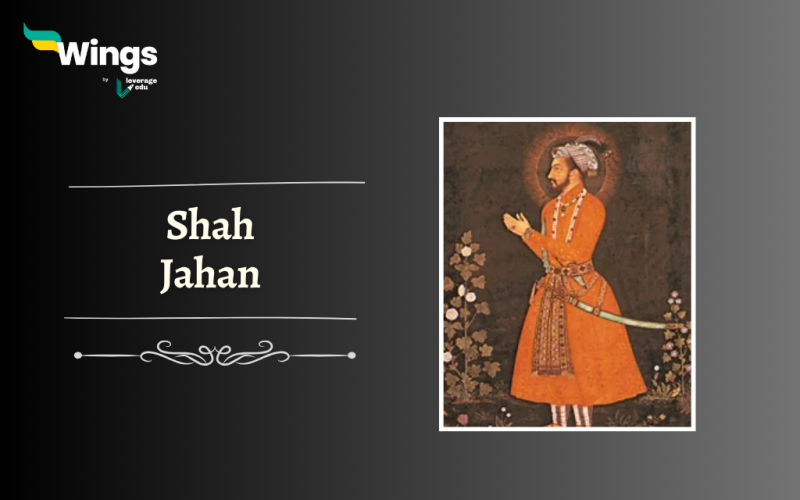In the chapters of Indian history, few rulers have left a mark on the world as Shah Jahan, the fifth emperor of the Mughal dynasty. His reign, spanning from 1628 to 1658, was a period of unparalleled splendour, architectural magnificence, and profound romance. Shah Jahan is best known as the visionary behind the iconic Taj Mahal, a monument dedicated to eternal love. However, his legacy extends far beyond this marble masterpiece, encompassing a reign of opulence, cultural refinement and grandeur. Join us on a journey through the life, love and enduring contributions of the man who etched his name into the heart of India’s history.
Table of Contents
Early Life And Education
Shah Jahan, the fifth Mughal emperor of India, was born on January 5, 1592, as Prince Khurram. He was the third son of Emperor Jahangir and the grandson of Emperor Akbar. From a young age, he displayed intelligence, charisma and a deep appreciation for art and culture. His early education in various subjects including art, music and poetry, laid the foundation for his patronage of the arts as emperor.

The Path to the Throne
Shah Jahan’s journey to the throne was marked by political intrigues and power struggles within the Mughal court. In 1628, he ascended to the throne after a fierce battle with his father, Jahangir. His reign began with a strong desire to continue the Mughal tradition of building magnificent structures, a tradition exemplified by his father and grandfather.
Must Read: Babur: The Magnificent History of the First Mughal Emperor
The Love Story Of Shah Jahan And Mumtaz Mahal
Shah Jahan’s reign is inextricably linked to the profound love he shared with Mumtaz Mahal, his favourite wife. Their deep and passionate love story is legendary. Tragically, Mumtaz Mahal died during childbirth in 1631, leaving Shah Jahan devastated. In her memory, he embarked on the construction of the Taj Mahal, one of the most exquisite architectural wonders in the world. Completed in 1648, this ivory-white marble mausoleum stands as a symbol of eternal love, a jewel in the crown of Mughal architecture.

Architectural Marvels
Shah Jahan’s architectural endeavours extended beyond the Taj Mahal. He commissioned several other awe-inspiring structures, such as the Red Fort in Delhi, the Jama Masjid, and the Shalimar Gardens in Lahore. Each of these monuments is a testament to his commitment to promoting art and culture within his empire.
Under his rule, the Mughal Empire reached its zenith in terms of territorial expansion and economic prosperity. His administration was marked by efficient governance and economic policies, resulting in a flourishing empire. His patronage of the arts attracted artists, scholars, and poets from across the world, creating a vibrant cultural milieu.
Also Read – 5 Causes Of Decline Of Mughal Empire
Later Years And Decline
Despite the grandeur of his reign, Shah Jahan’s later years were marred by tragedy and strife. His health deteriorated, leading to a bitter power struggle among his sons. His third son, Aurangzeb, emerged victorious and placed Shah Jahan under house arrest in the Agra Fort. There, he spent the last years of his life gazing at the Taj Mahal, the final resting place of his beloved Mumtaz Mahal.
Criticism
Shah Jahan, the Mughal emperor responsible for the Taj Mahal, is often romanticized for his architectural achievements. However, his extravagant spending on opulent monuments like the Taj Mahal, at the expense of his subjects, has drawn criticism. The construction of the Taj Mahal drained the empire’s resources and imposed heavy taxes on the already impoverished population. Furthermore, Shah Jahan’s authoritarian rule resulted in widespread suffering, economic instability, and a lack of innovation in governance. While his architectural legacy is undeniable, it is vital to recognize the cost of his reign in terms of human welfare and fiscal responsibility.
Also Read – Birbal: An Overview of Mughal Emperor’s Advisor
Legacy And Conclusion
Shah Jahan passed away on January 31, 1666, a prisoner in his own creation. His death marked the end of an era in Mughal history and the empire’s decline began under Aurangzeb’s rule. In conclusion, Shah Jahan was a remarkable ruler whose legacy is forever intertwined with the architectural wonders he commissioned and the enduring symbol of love, the Taj Mahal. His reign marked a zenith in Mughal culture and power, and his devotion to art, culture, and his beloved Mumtaz Mahal continues to captivate the world’s imagination. Shah Jahan’s life and rule remind us of the enduring power of love and the ability of great leaders to leave a lasting mark on history through their passion and vision.
Relevant Blogs
This was all about Shah Jahan, the fifth Mughal emperor. If you want to know more about topics like this, then visit our general knowledge page! Alternatively, you can also read our blog on general knowledge for competitive exams!
 One app for all your study abroad needs
One app for all your study abroad needs













